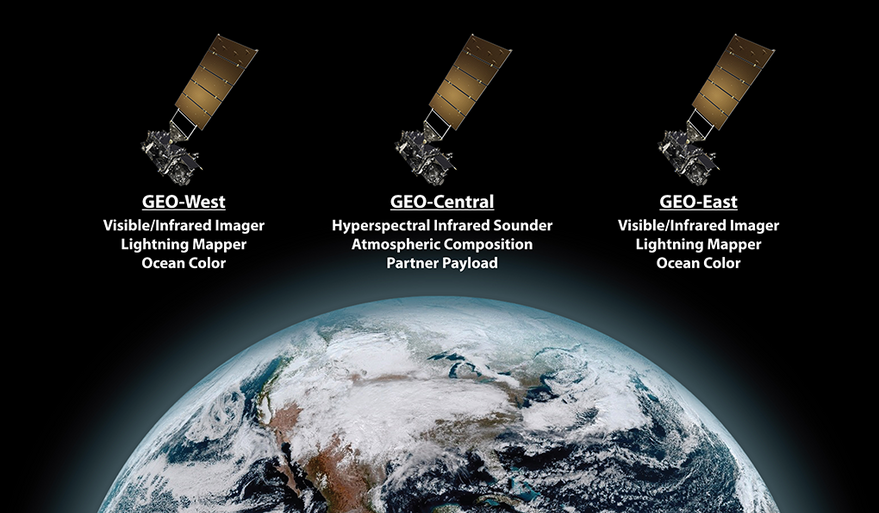WASHINGTON — The top Republican members of two oversight committees have asked the Government Accountability Office (GAO) to review a major new weather satellite program.
In a June 1 letter, Rep. Frank Lucas (R-Okla.), the chairman of the House Science Committee, and Sen. Ted Cruz (R-Texas), ranking member of the Senate Commerce Committee, requested the review of the National Oceanic and Atmospheric Administration’s Geostationary Extended Operations, or GeoXO, program of next-generation weather satellites, citing concerns about cost overruns and delays.
GeoXO is the successor to the ongoing GOES-R line of geostationary weather satellites that will ensure continuity of observations as well as new capabilities. NOAA projects spending $19.6 billion over the life of the six-satellite GeoXO program, extending to the middle of the century, nearly double what it spent on GOES-R.
In their letter, Lucas and Cruz did not cite any specific issues with GeoXO but instead noted prior cost and schedule problems with GOES-R. “The delays and budget overruns in the GOES-R program make it all the more important to ensure that GeoXO is well-managed, as any problems will be magnified by the greater complexity and cost of GeoXO,” they wrote.
They asked that the GAO examine if NOAA has followed “best practices and statutory guidance” in setting cost estimates for GeoXO, review the design and development of the program, assess NOAA’s strategies to stay on cost and schedule, and look at how NOAA has incorporated lessons learned from GOES-R.
The GeoXO program is still in its early phases. NOAA selected L3Harris in March to provide the imager instrument for the satellites under a $765.5 million contract. NOAA plans to select a provider for a new sounder instrument later in the year.
NOAA requested $417.4 million for GeoXO in its fiscal year 2024 budget proposal. The program received $285 million in fiscal year 2023, far less than the $653.8 million it requested. Appropriators said the funding they provided would be sufficient to complete formulation studies and award the imager contract.
“NOAA’s current constellation has proven its worth and will continue to do so for another decade. However, NOAA must concurrently invest in the next generation of environmental satellites with the needs of all of our communities in mind,” Rick Spinrad, NOAA administrator, said in his opening statement at a House Science Committee hearing May 11 about his agency’s budget proposal, noting that the funding for GeoXO and other future satellite programs would “ensure critical data continuity” from existing systems and add new capabilities.
Spinrad also said at the hearing that he was working to create a “rigorous acquisition strategy and structure” at NOAA, one that, for weather satellite programs, will continue to rely on NASA for handing procurements of satellites and instruments.
“While these appear to be positive steps,” Lucas and Cruz said that effort in their letter to the GAO, “it is unclear if this new process will be successful.”
